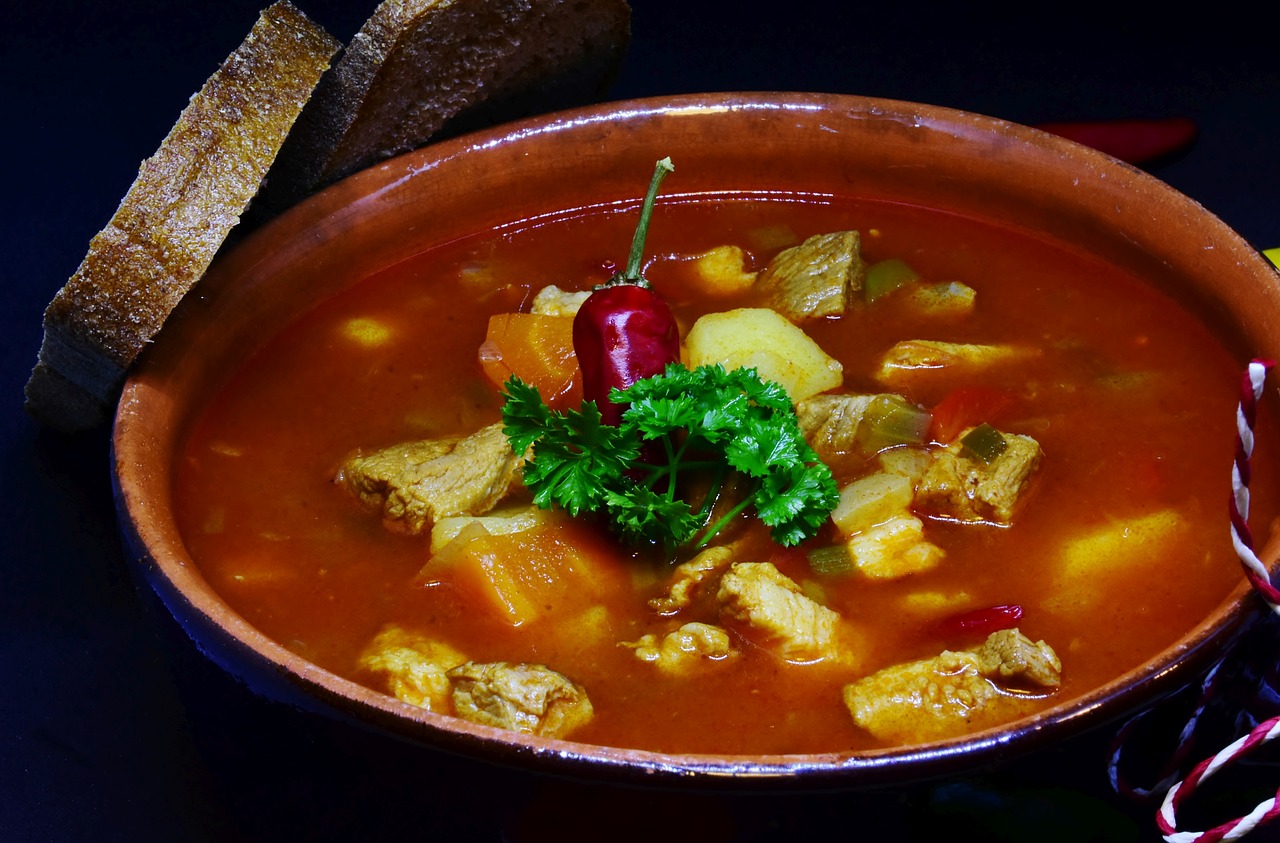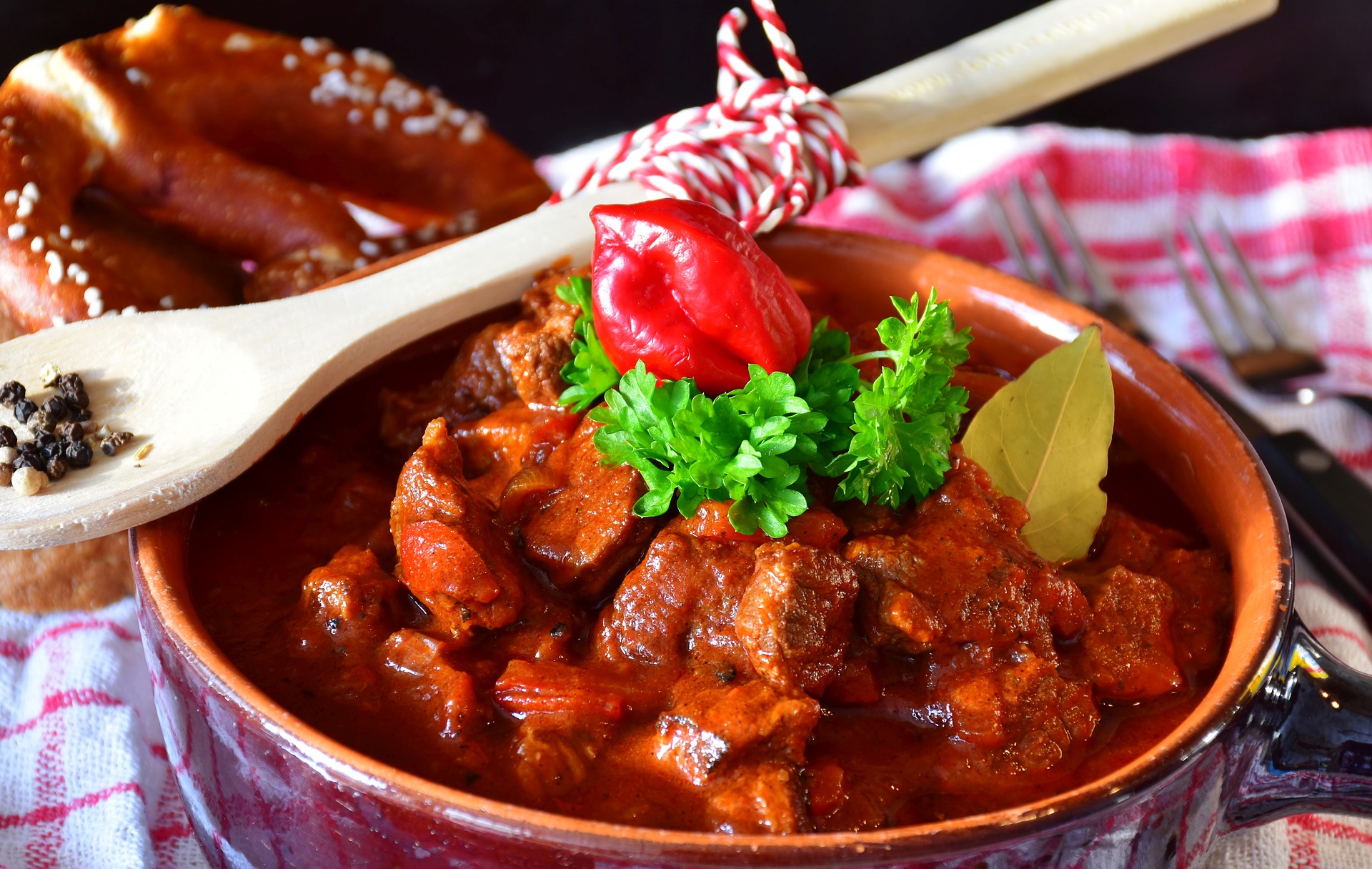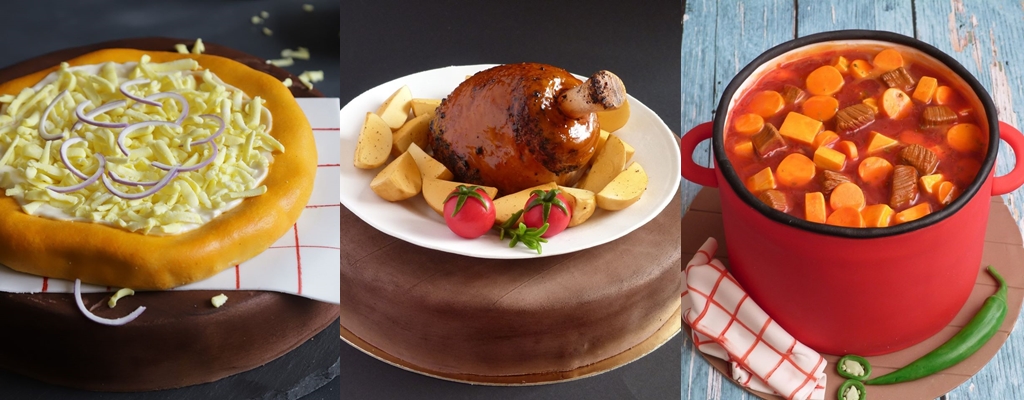There is more than one type of Hungarian goulash – 5 recipes for you to try out

Goulash is one of the most famous Hungarian dishes. As Hungarian dishes gained some popularity over recent years, it is being served in more and more places around the world. Unfortunately, due to the coronavirus pandemic that struck the world, it is almost impossible to travel or to go to a good restaurant, so if you crave some Hungarian flavours, in this article you will find five recipes for you to try out at home and get to know the many flavours of goulash there can be.
As in the case of almost all good home-cooked meals, every family has its own little tweaks and twerks. Well, this is the case concerning the Hungarian goulash. While it is mostly the traditional goulash that conquered the tastebuds of the world, there are many variants of the dish from different parts of the country or depending on what is at home. Now let us move on to the recipes.
Traditional goulash
Although the traditional Hungarian goulash is best in a ’Hungarian pot’ or kettle (bogrács), this might not be possible because the weather can be quite chilly this time of the year, but do not worry; it can be just as tasty when cooked on the stove. You can adjust this base recipe however you like. Some people add diced green pepper, tomatoes, or more vegetables like turnip, you could add more meat if you want. You could make it with less water or leave it on a bit longer if you prefer your goulash thicker, more like a stew. Feel free to experiment and come up with your own family recipe. The most important thing is quality meat. In my opinion, it is best with some fresh bread to soak up the broth with or to clean those last bits from your plate.

Ingredients:
- 1 kg beef (shank or crop)
- 2-3 big onions
- 50 dkg of potatoes
- 3 carrots
- 2 parsley roots
- 1 head garlic
- 2 tablespoons of paprika
- 2 teaspoons of ground caraway seed
- mangalitza or pork fat (lard)
- parsley
- salt and pepper
for the noodles:
- 1 large egg
- 10-12 dkg of flour
- salt
Directions:
Prepare the ingredients; wash and peel the vegetables. Cut the meat into bite-sized cubes. Dice the onions, slice the carrots, parsley roots, and the potatoes. I usually prefer the potato pieces to be bigger than the meat.
Start by adding the lard and onions into the pot. You should cook them until they get glossy or slightly yellowish, but not brown. Add in the garlic as well, stir it and remove the pot from the heat or turn it off for a bit. Add in the meat cubes, the ground caraway seeds, and the paprika powder, and mix it well together. It is important to remove the pot from the heat because if you burn paprika, it becomes bitter. After mixing it together, put it back over the heat and add just a little water if needed. After the water is cooked away, you can season it with salt and pepper.
Add the potatoes, carrots, and parsley roots. It is usually at this step that some people add diced green pepper or tomatoes. You need to add water to cover everything. Now you must be patient as the meat and potatoes can take about 2 hours to cook well. If you want a soup, add some water to the pot as it boils away. Meanwhile, you can prepare the noodles: simply mix the eggs, the flour, and some salt. If everything in the goulash has softened, add in the noodles by tearing bite-sized pieces off from the dough. You need to cook it for ten more minutes, and the meal is ready. Enjoy with a little parsley on top.
Csango goulash (csángó gulyás)
The Csango people are a Hungarian ethnographic group of Roman Catholic faith living mostly in the Romanian region of Moldavia. Their traditional language, Csango, an old Hungarian dialect, is currently used by only a minority of the ethnic group.
The following recipe is from Norecipes: “Cooked in stock with sweet paprika and a bit of caraway, Csango Goulash is traditionally more of a hearty soup than a stew, though you can take it in either direction by adjusting the size of the beef and the amount of liquid. Finished with a dollop of sour cream, it is the ultimate comfort food for a cold winter day”.

Ingredients:
- 650 g beef cheeks (shins or chuck is also good)
- 2 tsp vegetable oil (can use pork or mangalitza lard)
- 270 g onion (~1 large onion, finely chopped)
- 14 g garlic (~2 large cloves, finely minced)
- 50 g peppers (chopped)
- 6 cups vegetable stock
- 1 tbsp paprika
- 1 tsp caraway seed
- 1 bay leaf
- 50 g long-grain rice
- 680 g sauerkraut (lightly rinsed)
- sour cream (to serve)
Directions:
“Cut off the excess fat from the meat and dice them up into small cubes. Season it with salt and pepper. A dutch oven or a good quality thick-bottomed pot is recommended. Heat the vegetable over medium heat and add the beef in a single layer. Brown the beef in one side and then flip the pieces over to brown the other side. When this is done, transfer the meat to another bowl and set it aside.
Turn down the heat and add the onions and garlic to the pot. Cover the pot and let the onions steam for about ten minutes until they get tender. Remove the lid and add the peppers and sauté it until the onions are browned. Add the vegetable stock, paprika, caraway and bay leaf, cover with a lid and then let the beef cheek simmer over medium-low to low heat until it starts to get tender (about 45 minutes).
Drain and lightly rinse the sauerkraut. When the beef is almost tender, add the rice and sauerkraut to the Goulash. Cook until the sauerkraut and rice are tender (about another 30 minutes). Adjust salt to taste and serve with sour cream and dumplings, or boiled potatoes”.
Shepherd’s goulash (pásztorgulyás)
The recipe is from Tutireceptek. This is just a slight take on the original recipe that has organ meat in addition to beef, giving it a bit of a stronger flavour.

Ingredients:
- 0.5 kg beef (shank or crop)
- 30 dkg organ meat (heart and liver)
- 1 tbsp lard (you can use oil, but be cautious when adding the onion and paprika)
- 1 large onion
- 2 cloves of garlic
- salt
- paprika
- caraway seed
- marjoram
- 2 tomatoes
- 1 kg of potatoes
- noodles from the first recipe (smaller portion here)
Directions:
Wash the meat and organs and cut them into small cubes. Melt the lard in a quality pot and add the diced onions. Cook them until they get glossy or slightly yellowish. Add in the garlic as well and stir it. Sprinkle it with paprika and add the beef and organ meat to the pot. Season it with salt, caraway and finely chopped marjoram and cook it over medium heat. Add the tomatoes and pour some water into the pot, just small amounts and steam it until the meat starts to soften. When it is almost entirely softened pour water into the pot to cover everything well. Add the potatoes and cook together until it thoroughly softens. You can add the noodles you cooked separately when you serve.
Venison goulash with beans
This recipe is from Mindmegette. It uses beans instead of potatoes and venison instead of beef. It has a different flavouring due to the different meat, but the method is almost the same.

Ingredients:
- 1 kg venison
- 8 dkg lard
- 25 dkg beans (dry or canned)
- 8 dkg green peppers
- 1 tomato
- 10 g paprika
- 15 dkg onions
- 2 cloves of garlic
- salt
- chilli (pepper, powder or flakes, not necessary)
- 0.5 dl red wine
Directions:
Cut the venison into cubes and wash it with cold water. Put the lard in the pot and cook the onions until they become glossy or slightly yellowish. Add the paprika and the crushed garlic. Add the diced venison and salt, then steam it with a bit of broth with the lid on until it becomes soft. If needed, add water or wine to the mixture as it boils away. Add the green peppers and the tomato (or puree). When the meat is soft, add the canned beans and mix it in. Boil it for a few minutes. If you use dry beans, you need to soak them beforehand and cook the soft separately.
Lentil goulash with pork knuckle and Hungarian sausage
This recipe is from Mindmegette. This recipe does not use the traditional onion and paprika base and uses pork instead of beef.

Ingredients:
- 25 dkg pork knuckle (hock)
- 1 l pork knuckle broth
- 2 onions
- 5 cloves of garlic
- 2 chilli peppers
- 3 bay leaf
- 25 dkg lentil
- 3 carrots
- 2 parsley roots
- half the head of a kohlrabi
- half the root of celery (celeriac)
- 1 green onion
- 2 pepper
- 2 chilli peppers (not necessary)
- 2 tomatoes
- 2 potatoes
- salt
- ground black pepper
- spicy paprika (you can use the normal/mild)
- 10 dkg Hungarian “peasant” sausage
- 2 dl sour cream
Direction:
Cook the pork knuckle beforehand and save 1 l of the broth. Wash the lentil and use the broth to soak the lentils the day before. Clean and cut the vegetables. Add the lentil and the vegetable into a pot and season it. Cook it for about 45 minutes. While it is cooking, cut the pork knuckle into small cubes, peel the skin off the sausage and slice it up. Add the meat into the mixture and cook it for about five more minutes. Serve it with a bit of sour cream on top and with bread on the side.
Source: Daily News Hungary, Mindmegette.hu, Tutireceptek.hu, Norecipes.com





That lentil Gyulas looks very tasty! Definitely will make it.